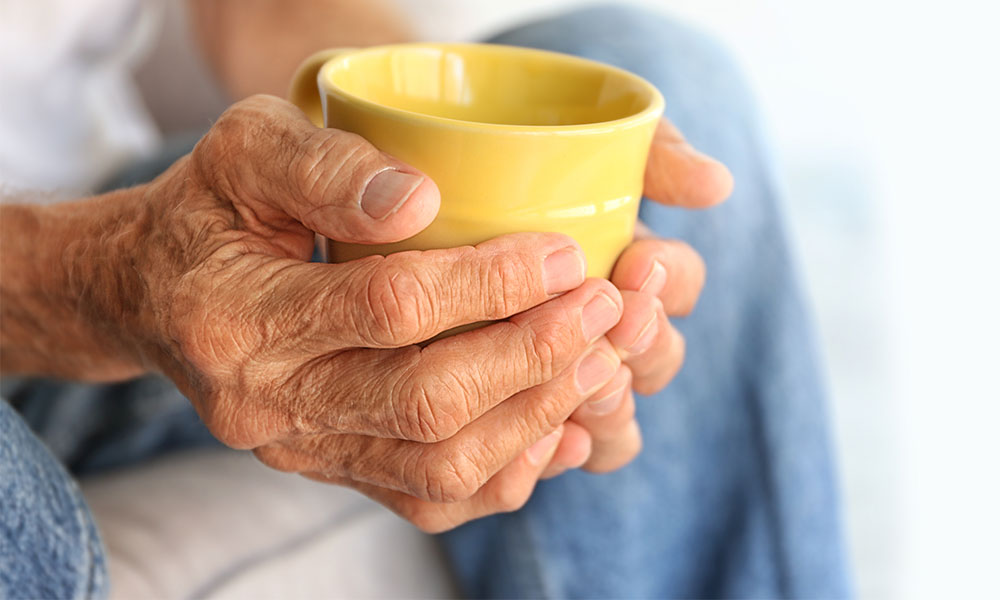What is Parkinson’s disease (PD)? Parkinson’s disease is classified as a neurodegenerative disorder affecting the substantia nigra in the brain that is responsible for producing dopaminergic neurons, or the “dopamine producing” neurons.
Approximately 60,000 Americans are diagnosed with PD each year with more than 10 million people worldwide are living with PD (Parkinson’s Foundation, n.d.). The cause of Parkinson’s disease is unknown but there are some factors that may play a role in the development of it including but not limited to: gene mutations, environmental triggers, the presence of Lewy bodies, and a current focus in the study of Parkinson’s: a protein called Alpha-synuclein that is found within Lewy bodies. Some risk factors Parkinson’s disease include age, heredity, sex (men are more likely to develop this than women), and exposure to toxins like herbicides or pesticides.
The 4 cardinal signs of Parkinson’s diseases are used, along with other forms of testing and clinical findings, to help potentially diagnose a patient. The cardinal signs are tremor at rest (pilling tremor), bradykinesia, rigidity, and postural instability. Other secondary signs/symptoms are included, but not limited to forward flexed posture, “freezing” gait pattern/shuffle, loss of automatic movements, speech changes, writing changes, sleeping disorders etc. If you know a loved one who is displaying these cardinal symptoms with secondary symptoms, getting a jump start on the diagnosis is the best way to help delay the progression of Parkinson’s, as there is no cure currently. For young, early onset Parkinson’s there has been a lot of research into symptoms to help clue us into to the disease that sometimes show up before motor symptoms — and before a formal diagnosis — that are called prodromal symptoms. These include the loss of sense of smell, a sleep disturbance called REM behavior disorder, ongoing constipation that is not otherwise explained and mood disorders, such as anxiety and depression (John Hopkins Medicine, n.d.).
There are no lab or imaging tests that are absolutely required in diagnosing a patient. In 2011, the FDA approved an imaging scan called the DaTscan. This technique allows doctors to see detailed pictures of the brain’s dopamine system. A DaTscan involves an injection of a small amount of a radioactive drug and a machine called a single-photon emission computed tomography (SPECT) scanner, similar to an MRI scan. The drug binds to dopamine transmitters in the brain, showing where in the brain dopaminergic neurons are. While the results of this scan cannot definitively rule if you do/do not have Parkinson’s, it can help your doctor confirm a Parkinson’s diagnosis or rule out a potential Parkinson’s mimic (John Hopkins Medicine, n.d.).
As far as prevention goes, there are no guaranteed, definitive ways to 100% prevent against Parkinson’s disease. There is research to suggest that those who participate in regular aerobic exercise might have a reduced risk for PD. Some other research shows that those who consume caffeine regularly, which is found in coffee, tea and some soda, have a decreased risk for PD. It is still not known what the correlation between caffeine and PD is, or if there is a definitive correlation between the two. (Mayo Clinic, n.d.)
At Advanced Physical Therapy, we have therapists who are trained to help patients who have been diagnosed by their doctors with PD. We utilize the LVST BIG program which is a standardized treatment protocol that is then customized to each patient’s unique case including both fine and motor skills. The program is then adapted or progressed, depending on each patients’ severity, and presenting impairments. Our therapists go through extensive training and education to provide quality care to our PD patients in order to help improve their quality of life. Check out our website to see which of our many locations offer this incredible program!
By Aimi Orton, PTA
Sources
Jankovic, J. Parkinson’s disease: clinical features and diagnosis. Journal of Neurology, Neurosurgery & Psychiatry 2008;79:368-376 (https://jnnp.bmj.com/content/79/4/368.info)
John Hopkins Medicine. How Parkinson’s Disease is diagnosed. (accessed 16 February 2021) https://www.hopkinsmedicine.org/health/treatment-tests-and-therapies/how-parkinson-disease-is-diagnosed
Mayo Clinic. Parkinson’s Disease. (accessed 16 February 2021) https://www.mayoclinic.org/diseases-conditions/parkinsons-disease/symptoms-causes/syc-20376055
Parkinson’s Foundation. What is Parkinson’s Disease. (accessed 16 February 2021) https://www.parkinson.org/understanding-parkinsons/what-is-parkinsons




